
Consumer confidence low as a result of economic downturn
Consumers have had to face numerous personal challenges as a result of the recent economic downturn brought about by declining oil prices, economic sanctions imposed by the West, and the devaluation of the rouble, among other factors. In addition, traditionally high rates of income inequality have made adjusting to the new economic reality more difficult. Between 2013 and 2014, the growth of both annual disposable income and consumer spending per household slowed significantly in real terms and then both declined in 2015 by a projected 10 percent, reaching RUB683,347 (USD10,626) and RUB586,760 (USD9,124), respectively.
In particular, rising food prices are squeezing household budgets. As a result, consumers have postponed (or cancelled) shopping for discretionary goods. A recent article in The New York Times addressed a common phenomenon in Russian retail these days, “The brand-new Avia Park is a glittering testament to the power of the Russian consumer. A panorama of white tile flooring, under a soaring, six story-tall glass roof, it is the largest mall in Europe. There is just one problem: It is a ghost town. Row after row, storefronts are vacant. On a recent evening, a handful of visitors meandered past shops that have opened, but purchases are relatively rare. With no customers to serve, a chef at a Sbarro restaurant passed the time honing a knife.”
Nevertheless, some observers see light at the end of the tunnel, speculating that the Russian economy has hit rock bottom and can only improve. In a recent article in The Moscow Times, Oleg Kuzmin, vice president at Renaissance Capital investment bank, said, “The main positive development is that, [in 2015], despite the economic downturn, the economy has remained sustainable, which will lead to an overall stabilization next year.” Anton Struchenevsky, a senior economist at Sberbank CIB, was even more optimistic, noting that “[t]he economy has rather successfully adapted to new conditions caused by lower oil prices and problems with refinancing foreign debts... What is most important is that there is no longer a feeling of panic...”
Online shopping boosted by consumers looking for lower prices
As a result of the devaluation of the rouble and high inflation, a growing number of consumers have begun to shop online to purchase goods – including clothing, footwear and electronics – that are now prohibitively expensive in brick-and-mortar stores. In addition to shopping on well-known international websites, such as Amazon and eBay, consumers are increasingly looking to Chinese sites.
Of course, Internet retailing was growing prior to the economic downturn. For many shoppers it’s not only about the price. In numerous surveys, the public cited convenience and the wider selection of quality products as advantages of Internet retail sites. Improved payment and delivery systems have increased the demand as well.
In addition to international sites, consumers are turning to large domestic sites that offer affordable goods. For example, Ulmart.ru offers an affordable array of electronics, household goods, perfume and automotive parts, while retailers such as Ozon.ru offer jewelry, clothing, and books. While value sales per household of Internet retailers declined slightly in real terms between 2014 and 2015, they nevertheless reached RUB12,540 (USD195.00) in 2015, up from RUB10,703 (USD166.43) in 2013.
Russians increasingly adopting healthier lifestyles
Following a long tradition of high smoking prevalence, a strong drinking culture, and a high-fat, high-calorie cuisine, consumers are becoming increasingly aware of the benefits of healthier lifestyles. This has led a growing number of Russians to cut back on or eschew these habits altogether. For example, in 2014 smoking was at 38.6 percent, down from 44 percent in 2009, while consumption of alcoholic drinks declined by 18 percent between 2009 and 2014. Indeed, many are now proactively making efforts to get fit and maintain their fitness. For those who need additional help in addressing their health issues, the government has introduced a number of measures to curb smoking and drinking.
Many consumers are also choosing to eat healthier foods, buying and consuming more organic produce and fresh juices, and cutting out refined sugars and dairy products. On the other hand, despite these efforts, many Russians are still struggling with weight issues, with 32 percent of the adult population classified as overweight and 27 percent classified as obese in 2014. Regardless, life expectancy continues to rise, having reached 71.3 years in 2014, up from 68.6 years in 2009.
Older Russians delaying retirement
For a range of reasons, more older Russians are choosing to continue working rather than to retire. In some cases, older workers feel forced to continue working in order to maintain their standards of living in an environment of economic uncertainty. Although the country currently has one of the lowest retirement ages in the world, – 60 years for women and 65 years for men – the average monthly pension in 2015 was set at RUB10,000 to RUB12,000 (USD155.50 to USD186.60), according to the State Pension Fund. In line with a recent report from the World Bank, 40 percent of men of retirement age continue working, while 33 percent of women of retirement age do the same.
Rising inflation has also convinced many to stay working as long as possible. In a 2015 article in The Moscow Times, one Moscow resident said, “Everything is twice as expensive, both food and clothes.” Many pensioners must also add in the high cost of medicine, which has risen considerably in the face of the economic crisis because most medicine is imported.
At the same time, many older Russians simply enjoy working and do not want to quit. Throughout the 2000s, employment opportunities were plentiful, and more older people who wanted to work could easily do so.
High cost of mortgages keeps many off the property ladder
The mortgage boom that the country experienced throughout 2013 and into 2014 was cut short by the recession. With interest rates projected to continue to rise, many prospective home buyers, particularly younger consumers, will no longer be able to afford new mortgages. Indeed, the number of new mortgages was projected to decline by 46 percent in 2015. The availability of mortgage credit has diminished because of the worsening macroeconomic situation. Some market players have stopped giving credit or have set annual interest rates of 20 percent or more.
In order to address the mortgage slump and to assist those that are finding it difficult to repay their current mortgages, the government introduced an “anti-crisis” subsidies program in June 2015. Under the program, interest rates on all new loans will be capped at 13 percent. For those with existing mortgages, the situation has gone from bad to worse, with tens of thousands facing possible eviction for unpaid mortgage debt. Many have been unable to pay on their mortgages because banks have been unwilling to restructure current loans or they have imposed high interest rates in order to do so.
The situation has affected housing demand, with more consumers’ turning to smaller and smaller spaces. In a 2015 article in Vedomosti, the head of the analytical real estate firm IRN said, “As money grows tighter, buyers are favoring smaller, cheaper dwelling units.” Previously, prospective home buyers looked for two-bedroom units, but now demand has grown for studios and one-bedroom flats. In addition, many young Russians find themselves out of the market altogether, and many of them live with their extended families.
Home ownership
Most urban dwellers live in apartments due to land constraints. Apartments have been a popular choice since the Soviet era when the state provided housing and many families lived in communal apartments known as komunalki sharing single bathrooms and kitchens. Traditionally, Russians did not prefer to rent their apartments or houses, as they considered renting to be insecure. However, in more recent times this viewpoint has changed considerably in line with soaring property prices that have made purchasing a home or an apartment a remote financial possibility for many, especially the young people.
More Russians have opted to continue living in their family homes in the recent years, with nearly one in three people under the age of 45 living at home, according to a recent article in The Telegraph newspaper. Renat Laishev, president of Educated and Healthy Children of Russia, told The Telegraph that this is directly related to low wages, “The low salary of a young specialist who recently graduated from the university and the high rent payment make it impossible to live independently. In 67 percent of cases, money is the reason behind the lack of a desire to leave the parents’ home.”
According to the Metrium Group, among the largest groups of those owning homes are young families, i.e. mostly 25- to 35-year-olds. These include a good number of young professionals who are able to secure mortgages through the financial assistance from their parents. Still, most Russians, regardless of age, want to buy a home, but cannot afford to do so, particularly with the recent devaluation of the rouble. According to a report published on the website Gazeta.ru, monthly mortgage payments are nearly double rental rates, and this has left many unable to buy a property. One Moscow resident, Konstantin, said, “It is better to have a mortgage, of course, because the property is yours, and there are no surprises from the owner... Another thing to consider is that mortgages, under certain circumstances, are not always approved, but you can almost always rent an apartment.” Another resident, Alexandra, echoed that statement, saying, “We rent, but my husband really wants to buy an apartment... We are looking for something, a mortgage that would cost a few million that we could afford to pay off before retirement.” However, affordable mortgages are hard to find. The head of mortgages at Est-A-Tet, Alexei Novikov, said that to be able to secure a “comfortable” mortgage of RUB40,000 to RUB50,000 (USD622 to USD777.50) per month, prospective home buyers must come up with an initial payment of 40 to 50 percent of the price of the home, an option that is not practicable for most.
The recent devaluation of the rouble has had a significant impact on the rental market, with studios and one-bedroom apartments having become the most desirable. Indeed, developers have had to modify ongoing building work to accommodate the growing demand. According to a Gazeta article, studio apartments represent 22 percent of the overall market, while two-bedroom apartments represent only eight percent of the total. Generally, apartment sizes are in line with prices, but they are still too high for many to afford due to falling wages. Gazeta.ru stated that a 25-square-meter (269 sq. ft.) apartment in a large urban area costs approximately RUB3.1 million (USD50,000), while a 30-square-meter (322 sq. ft.) apartment costs RUB3.3 million (USD51,000). In the regions surrounding Moscow, prices are considerably lower. As such, an 18.2-square-meter apartment (195 sq. ft.) costs RUB1 million (USD15,550) in the Ramenskoye district.
High rent and property prices have boosted the rate of migration to the suburbs. This has caused a wave of “counter-urbanization” that has mostly affected pensioners who are on fixed incomes and cannot afford to live in major cities. The most popular areas include the districts surrounding Moscow – considered to be hot-spots for career and marriage prospects – and St. Petersburg, which is seen as a safe but eclectic city. The cities of the Far East and Siberia are not as popular but are up-and-coming, according to an article in The Siberian Times. According to the article, the city of Tyumen affords its residents a high and affordable quality of life that is hard to find elsewhere in Russia. The industrial city is home to many international companies and has also become a major tourist destination.
Household profiles
Between 2009 and 2014 the number of single-person households increased by 11.2 percent to reach 15.3 million in 2014, accounting for 27 percent of total households. The number is projected to rise to more than 17 million by 2020. In contrast, the number of households occupied by couples with children (the greatest number of households in 2009) declined by 0.4 percent to reach 14.2 million in 2014 (25 percent of total households). Over the same period, the number of households occupied by couples without children increased by 1.4 percent to reach 8.2 million in 2014 (15 percent of total households). Due to the country’s high divorce rate, the number of single-parent households increased by 3.3 percent between 2009 and 2014, reaching 6.9 million in 2014.
Apartments remain the most popular choice for all household types, despite the recent economic downturn and the high rental and home prices have led to single-room apartments being in their highest demand, particularly in urban areas. In rural areas, standalone, single-room houses are quite common, especially in rural villages and small towns. 74 percent of the country’s population reside in urban areas. The country’s Far East is the least populated due to the region’s extreme climate and terrain.
Despite the decline in the number of households established by parents with children, a large proportion of young adults have decided to remain in their family homes. Indeed, it is not uncommon to find several generations living within the same household.
Pet ownership is common, with nearly 40 percent of all households owning a pet, mostly cats and dogs. Urban dwellers tend to favor smaller breeds, while those living in rural areas and in standalone houses favor larger dogs. Large dogs are often used for protection and act as guard-dogs, rather than as companions.
Consumers rush to buy international brand appliances
The recent devaluation of the rouble has boosted demand among homeowners for a wide range of imported household goods. In particular, consumers are rushing out to buy appliances, especially kitchen appliances, from popular international outlets. In a recent article in the Financial Times, one consumer was quoted as saying, “I’m buying a fridge for RUB40,000 (USD622)... I was planning on buying it anyway, but I decided to do it quickly before the prices go up any more.”
Running costs
While most households have traditionally benefitted from relatively low utility costs, in recent years the cost of electricity, gas, and other fuels has increased, reaching a peak of RUB19,753 (USD307.16) per household in 2012. Since then, however, costs have declined by 15.3 percent (in real terms), reaching RUB16,723 (USD260.04) in 2014. In the winter months, residents of apartment buildings share heating costs, with the total cost divided by the number of apartments. Regardless, many residents always look for ways to lower their utility bills. The amount paid monthly largely depends on the location, with urban residents faring slightly better than those who live in standalone houses in small towns and rural areas. Those living in rural areas often utilize their fireplaces during winter months to stay warm and save money. For many, however, utility costs are becoming a burden for household budgets. One rural dweller recently commented, “We have a small, provincial house of 70 square meters, yet [our monthly] gas payment is RUB3,900 (USD60.65), plus water, electricity, and telephone of RUB5,000 (USD77.75) – all on a salary of RUB10,000 (USD155.50)”. According to a 2015 article in The Moscow Times, an increasing number of households are unable to pay their utility bills.
The head of the National Recovery Service said, “There is a stereotype in consumer consciousness that utilities are to be paid for last. Many accumulate debt for two or three months.” A growing number or households are now relying on government subsidies to help mitigate the rising costs. Some 3.5 million residents in large cities such as Moscow depend on local government utility subsidies. Subsidies are offered to low-income citizens, apartment owners, single mothers, the unemployed, and the pensioners, and the allowance largely depends on the number of household members and income.
DIY home renovations on the rise
The current economic downturn has left many households unable to move to new houses and, as a result, many are instead fixing up their current living spaces. At the same time, there is a growing prevalence among apartment dwellers to undertake home renovation projects on their own rather than turn to more expensive contractors. Home renovation and repair blogs such as klyushko.ru, give advice for projects ranging from installing kitchen countertops and flooring to replacing pipes. According to a recent article in Russia Beyond the Headlines, more consumers are turning to DIY suppliers such as Houzz (a home decorations retailer) in their efforts to improve their apartments on a tight budget. Of course, those that can afford it still tend to hire professional contractors.
Attitudes toward payment methods
Although Russian consumers have increased the number of credit and debit cards they hold, cash remains the primary payment method. In large part, Russians prefer to use cash because they believe it is more “secure” and private. While it is possible to use credit and debit cards in large urban areas, it is almost impossible to use them in smaller towns and villages and rural areas. In addition, the majority of smaller stores and kiosks in large cities only accept cash.
The preference to pay for goods in cash even extends to those buying products online. “Cash on delivery” is a very popular option among Internet shoppers who hesitate to enter their credit card information on the retailers’ websites. In fact, according to a recent article on website revenuewire.com, 69 percent of Russian consumers prefer to use “cash on delivery.” In addition, cash payments are also accepted at electronic payment terminals, such as Qiwi, where customers can access their accounts electronically and pay in cash. These offline payment kiosks that accept cash are the second most-preferred payment method, according to a recent Yandex survey. More recently, Russians have been able to use cash in conjunction with PayPal, the popular electronic payment service, which has traditionally not accepted cash and is linked to consumers’ bank accounts or credit cards.
Russian consumers are aware of online banking and e-money, according to a recent Yandex survey. According to the survey, 100 percent of those questioned said they were familiar with e-money, while 99 percent said they were familiar with online banking, with three-quarters of the people surveyed saying they use online banking at least once a year. The most popular device used for making online payments was reported to be desktop computers (53 percent), with only seven percent using smartphones for online payments and banking. Individuals in the 25 to 34 age category use mobile devices for payments most often. Professionals and middle-income couples used e-wallets most often, according to the survey.
Although cash is the primary payment method, many Russian consumers use credit cards and debit cards to purchase goods and make other payments. There were 33 million credit cards in circulation in 2015 along with nearly 204 million debit cards. According to a recent report from the Levada Center (a non-governmental polling and sociological research organization), credit cards are most popular among men, with 40 percent owning at least one card. Forty-three percent of Russians in the 25 to 55 age bracket reported having credit cards. In general, credit card users are highly educated and tend to live in urban areas.
The 2014 financial crisis prompted the Russian government to develop a national payment card. The card is called Mir (meaning “peace” or “world”) and it began circulating in the third quarter of 2015. The card is distributed through the Russian Central Bank.
Savings
The financial crisis of 2008 affected the savings habits of the majority of Russians and led to a general distrust of national banks. In 2010, many Russians, fearful of their financial futures, began saving money by keeping it at home (“under the mattress”) rather than depositing it in their bank accounts. But since 2010, the savings ratio has declined, reaching 10.8 percent in 2014 after a peak of nearly 16 percent in 2010. As a result of the current financial crisis, 34 percent of the population said they are unable to save, according to a national survey by Romir. The same survey noted that the majority of people who are saving are 60 years and older.
While Russians have traditionally saved in roubles, after the recent devaluation, a growing number are saving in U.S. dollars, which they consider more secure. According to a recent report from Reuters, a growing number of Russians are buying dollars after frantically searching Russian search engine Yandex with the query, “what to do with roubles in 2015?” According to the same report, the demand for dollars has increased by more than four times since October of 2014.
Loans and mortgages
Access to consumer loans and credit has improved significantly since the year 2000, and an increasing number of consumers have borrowed to finance buying homes and cars and other purchases, although historically Russians do not tend to overextend themselves in terms of personal debt. According to a recent consumer finance survey conducted by the Ministry of Finance in conjunction with the Higher School of Economics and the Demoscope Research Institute, most Russians tend to carefully weigh the risks of borrowing before applying for loans. The same survey noted that 46 percent of borrowing was related to buying real estate.
Starting in 2013 and continuing through 2014, there has been a surge in the number of mortgages, boosted by the financial crisis, which prompted many to buy as the rouble continued to fall against the U.S. dollar. Banks increased consumer incentives, often with outrageous gimmicks. For example, according to a recent article in the International Business Times, Sberbank sought to capitalize on the superstitious belief of many Russians that cats bring good luck to a new home. The bank offered new customers their choice of one of ten cat breeds in the hope that it would convince prospective home buyers to borrow from the bank. But it has been projected that the rouble mortgage boom is not set to last, with interest rates expected to rise and resulting in many prospective home buyers’ no longer being able to afford to take out a mortgage at all.
The devaluation of the rouble has affected borrowers with existing foreign currency loans, especially those whose loans and mortgages are denominated in U.S. dollars. According to a recent article in The Moscow Times, many Russians who took out these mortgages during the boom period of 2010 to 2012 are finding repayment very burdensome. One borrower said, “Since I took my mortgage, my salary has remained at RUB70,000 (USD1,088.50), but my monthly payment now is RUB85,000 (USD1,321.75) a month.” Some borrowers attempted to protest in a city square, with signs proclaiming “[t]he Central Bank stole our future.” A recent report from Reuters noted, “Selling the property is not a solution. Since the homes are based in Russia, they would be sold in roubles, whereas the debt remains in a foreign currency.” That leaves the mortgage holders in so-called negative equity. “Many people find themselves in a situation where the price of the apartment does not cover all of the debt,” said Yuri Yufyakov, a real estate agent in Moscow.
According to a BBC report, more than 40 million Russians currently have loans or mortgages, and it was projected that 12.5 million of those loans would have gone unpaid for at least one month in 2015, with eight million having gone unpaid for three or more months. “Debt despair” was especially problematic in industrial cities. The head of Sentinel Credit Management observed that due to lay-offs and wage cuts, “[firms go] bankrupt, the working week is cut... We see that especially in ... Siberia and the Urals.”
While declaring bankruptcy has not been an option for individuals in Russia, a new law that came into effect in late 2015 changed that. The crippling debt carried by millions of Russians has reached its limit, and citizen protests have prompted the government to take action. According to an article in The Moscow Times, Russians with personal debt of more than RUB500,000 (USD7,775), who have missed payments for more than three months, will be eligible to file for personal bankruptcy. Individuals with less debt but still unable to make timely payments will also be allowed to file. Petitions can be filed by individuals or through their creditors.
Contactless payments becoming popular
Contactless payments have quickly become popular among consumers. This new technology, which is provided through Qiwi in collaboration with Visa, offers a new form of the e-wallet. Consumers use the payWave card app on their smartphones and hold it up to terminals to make payments. The country manager for Visa Russia stated, “Russia ranks first in terms of the penetration of contactless payments with the Visa payWave app... This technology is popular among cardholders due to its convenience and security.” In addition to using their smartphones, consumers are also able to use their smart watches, provided through Alfa Bank accounts.
Female grooming and fashion trends
Russian women like to wear fashionable clothing and footwear, especially in the cities, such as Moscow and St. Petersburg. The latter is considered by many to be the fashion capital of Russia. There is a popular local saying that “good clothes open all the doors” and, according to an article in Russia Beyond the Headlines, this is certainly believed by many women. According to the article, “Women need to look their best 24/7; they need to show all those around that they are simply the best.” In part, according to the article, women are now expressing themselves through fashion in response to “70 years of restraint put on their womanhood.”
The same article noted that Russian women spend higher levels of their income on cosmetics than women in other European countries. According to an article in The Moscow Times, Russian women take the longest to get ready in the morning than other European women; 57 percent of women between 18 and 49 years of age spend on average 45 minutes per day. In contrast, only 26 percent of German women in the same age range spend that amount of time in front of the mirror in the morning.
The emphasis on establishing the beauty regimen starts early, according to Dr. Maya Khondrashova, head physician at the International Institute of Aesthetic Medicine. “Girls as young as 12 to 13 years of age have a good idea of facial and bodily care,” she said. Women use a vast array of beauty products, including moisturizers, facial creams, foundation, deodorant, and perfume. Although Western beauty products are highly coveted, many women use domestic brands, as Western imports have become increasingly less affordable. Many prefer to use traditional, natural skin care remedies, including homemade skin cream. As beauty products and salon services are very expensive, many women take care of such things as hair coloring and waxing at home.
The financial crisis has also had an impact on how many women buy cosmetics. According to an article in Lenizdat, online purchases of cosmetics increased by 28 percent in 2014, in part a response to lower prices. Moreover, the purchase of cosmetics online has also been greatly influenced by the popularity of “beauty bloggers” whose online presence has grown significantly since they emerged in 2013. Bloggers have boosted the demand for specific cosmetic brands through product reviews. Beauty blogs, such as beautyinsider.ru, feature a variety of reviews, tutorials, and discussions of make-up trends. They are particularly popular with younger consumers.
Among those who can afford it, cosmetic surgery has increased in popularity. While the concept of aesthetic surgery arrived in Russia only 10 to 15 years ago, it is nevertheless one of the growing areas of medicine, according to a Voice of Russia article. According to the article, cosmetic surgery became popular around 2009 when a number of private medical institutions began offering procedures such as breast augmentation, rhinoplasty, and face-lifts. According to Dr. Vladimir Korchak, head surgeon at the private Korchak Clinic, women “don’t want to look old.” Many women are now deciding to undergo treatment before prices skyrocket beyond their budgets. The president of the Platinental Aesthetic Lounge (a plastic surgery center) said, “Clients are afraid that prices will increase, so they are rushing to do surgeries that they have already planned... They are spending money on themselves that wasn’t enough for an apartment or a car.” The most popular procedure is breast enhancement, accounting for 16 percent of cosmetic surgeries, followed by nose enhancement.
Women seeking to wear the latest fashions are also influenced by online blogs. Style blogger Uliana Kim recently told the Calvert Journal, “The image of contemporary women ... has changed drastically... A modern woman ... struggles to succeed in work ... and look perfect.” Popular fashion blogs such as Vanilla Sisters, Lola from Valencia, and White Rabbit Dreams bring everyday street style to women, providing them with inspiration for their own look. Blogs often feature store recommendations for purchasing the outfits modeled.
There has recently been greater demand among Russian women for domestic designer-wear, in part a response to the increasing prices of many international fashion labels. Popular fashion designer Alena Akhmadullina recently told the Business of Fashion blog, “Even for very rich Russians, it’s very difficult to see the prices double [for international labels] and still feel comfortable buying them.” Buying fashion online has also become more popular. Indeed, in-store purchases of clothing declined by 28 percent in 2014. According to an article in Vedomosti, this trend has been due in part to increased prices for international labels since the financial crisis.


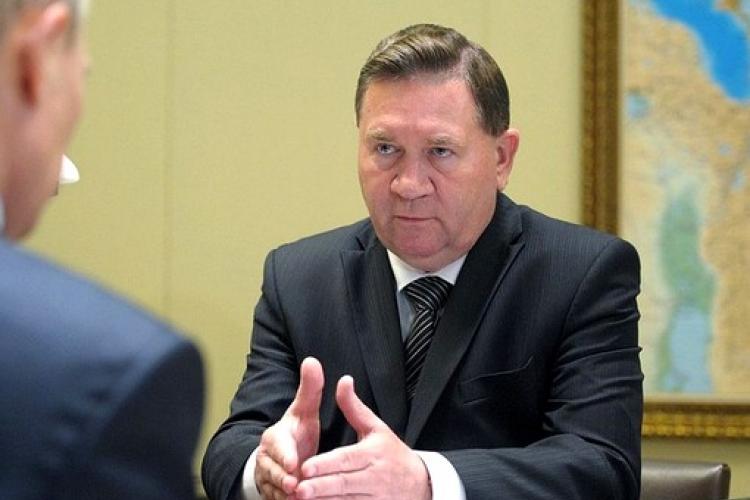
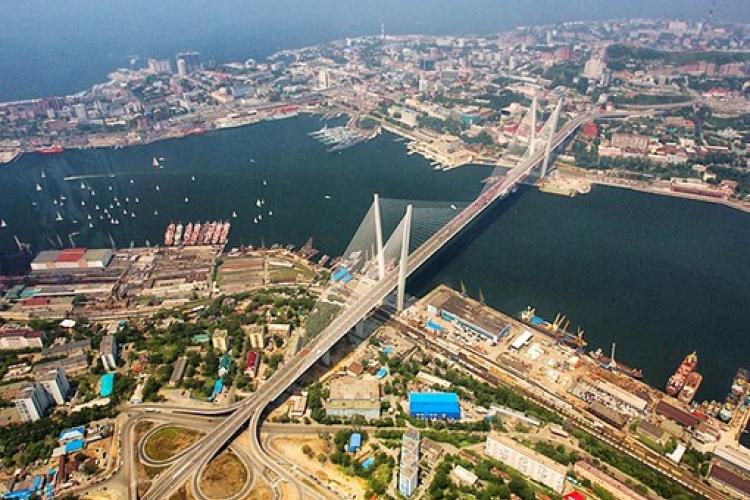

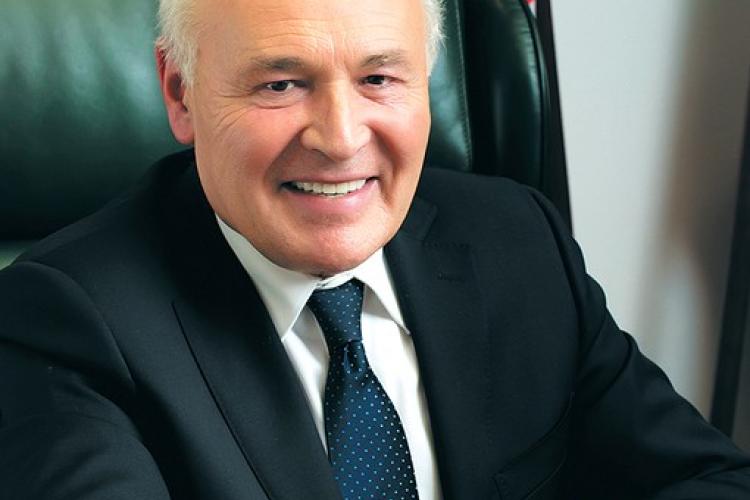
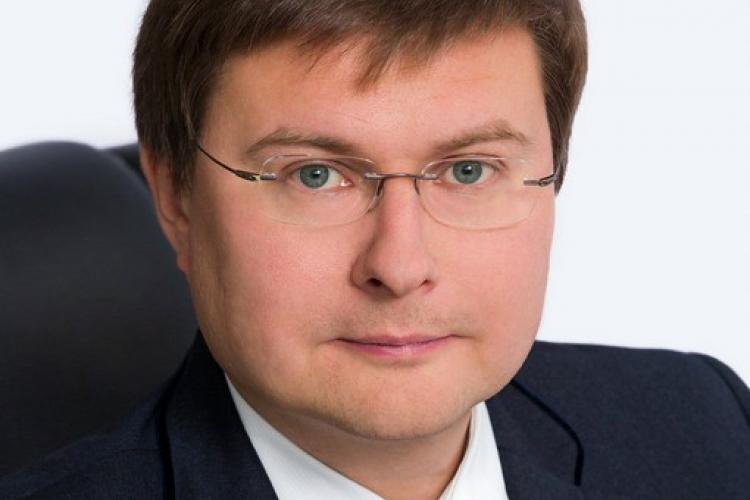


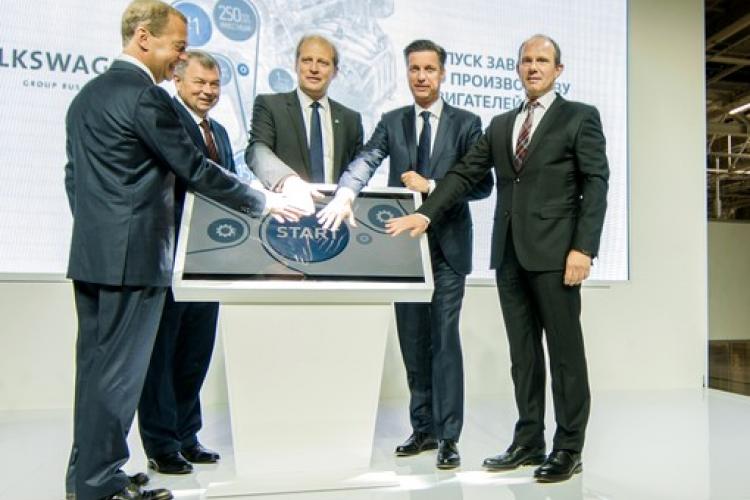
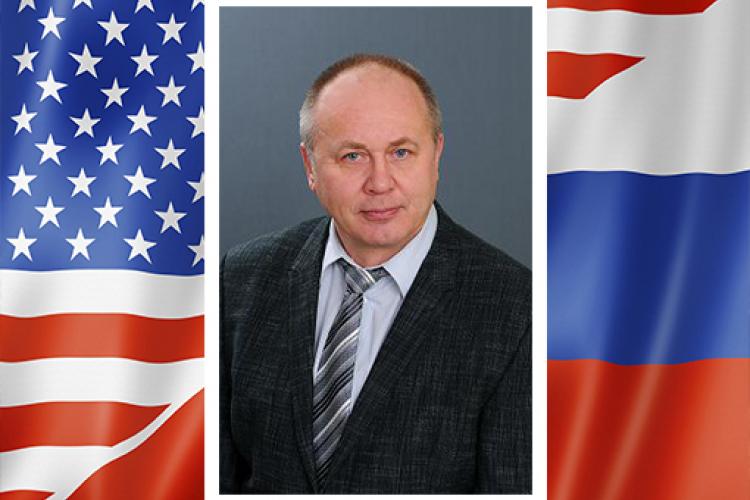

Leave a comment